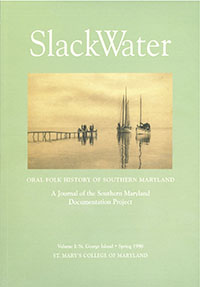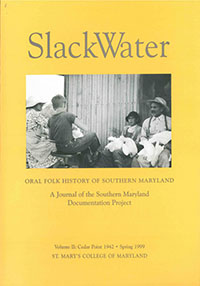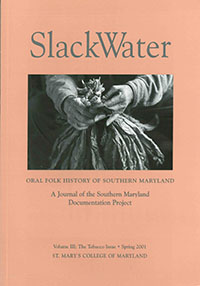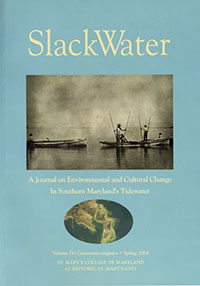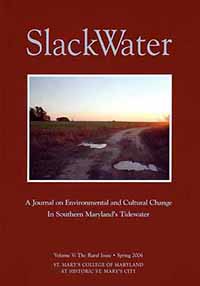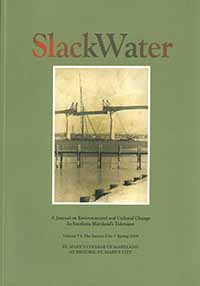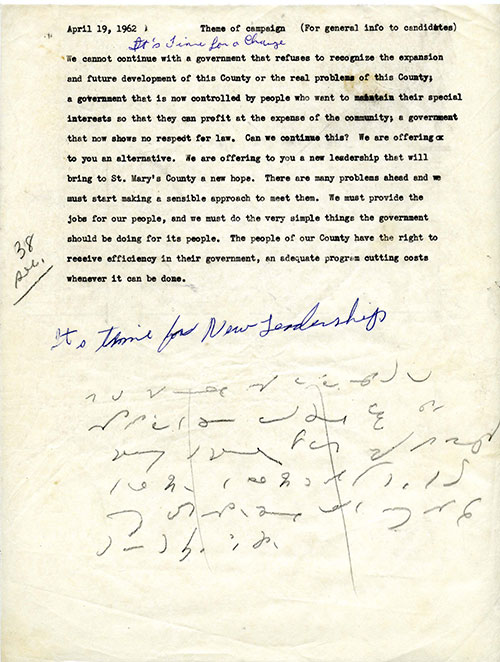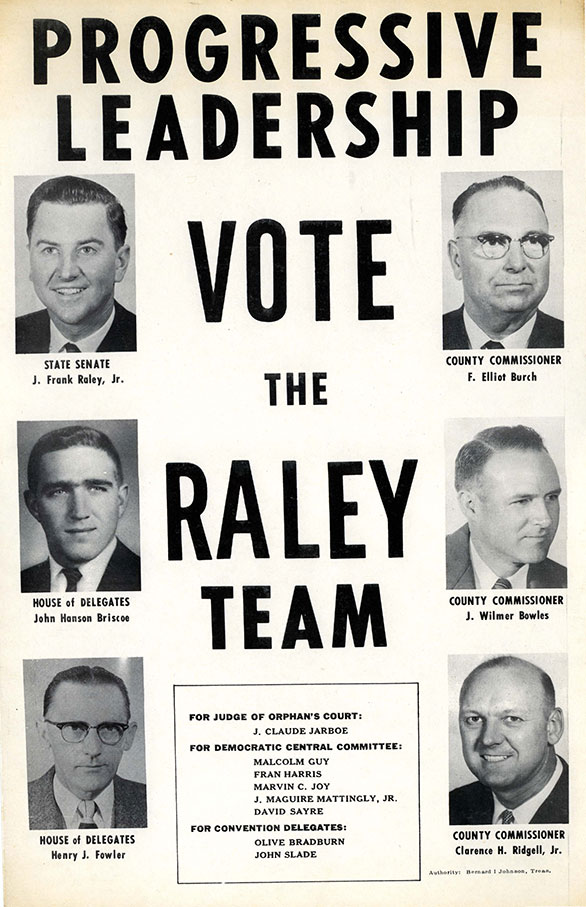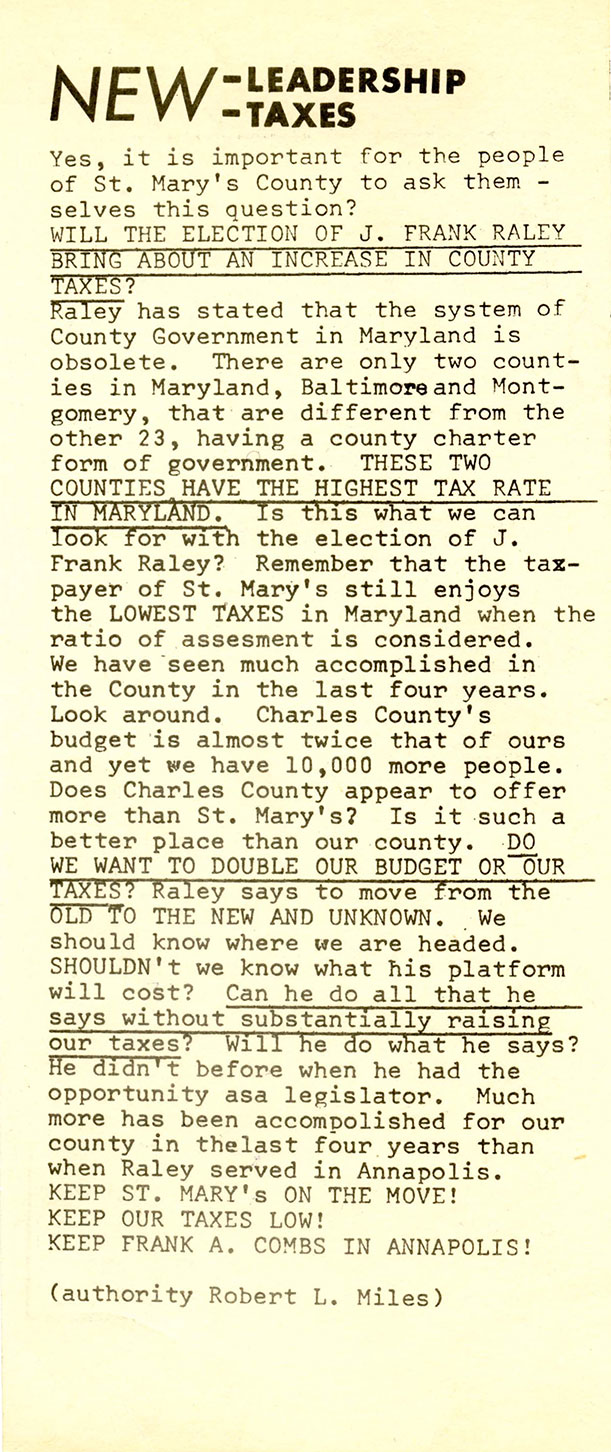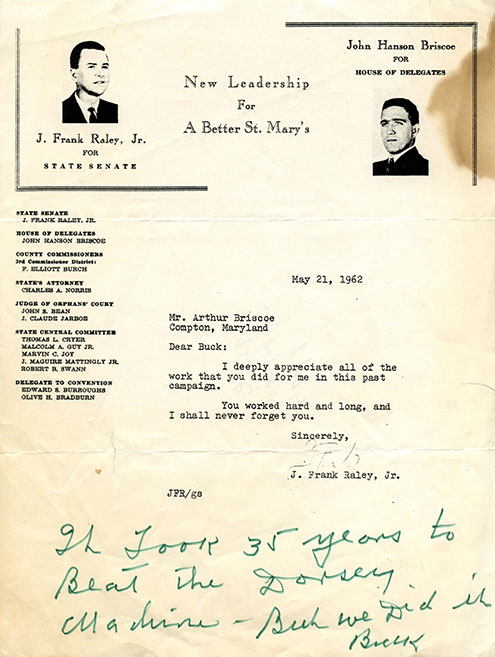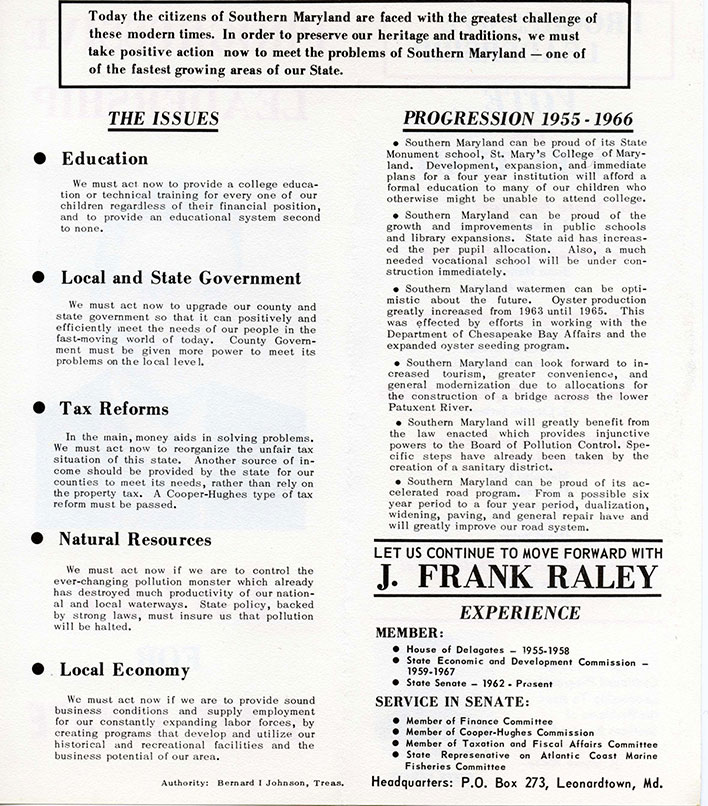On the Campaign Trail

Serving only one term as a senator (1963-1967), J. Frank Raley’s importance to the region ironically grew when, in 1967, an upset electorate sent him packing. Raley, a native-born son who thought of himself first and foremost as a progressive, essentially sacrificed his political career when he took a stand against gambling. Raley had gone from a studied indifference to slot machine gambling to the person leading the effort to trade slots for investments in infrastructure.
While many voters couldn’t forgive Raley (after all, by his own admission, he had not run for office to abolish gambling), the legacy of his actions everywhere surrounds us, whether we realize it or not. The investment in public schools, including the expansion of St. Mary’s College of Maryland; the dualization of Maryland Route 235; the building of the Thomas Johnson Bridge; the creation of a county land use planning department; and the acquisition of land for Point Lookout State Park are a few of the material impacts Senator Raley had on the landscape. The expansion of the Patuxent River Naval Air Station – the jobs engine of Southern Maryland – in the late 1990s and the facility's ability to survive subsequent reviews by BRAC (Base Realignment and Closure Commission) are a direct result of the vision Senator Raley had decades earlier.
In this oral history, recorded on April 2, 1998 by SMCM student Jason Peeters, Senator Raley explains the emergence of Lexington Park as a political force.
Many people [in the county] were making more money than they'd ever had in their life, and they liked that. And then there were others—particularly some of the old countians centered around Leonardtown—who saw this as a threat, indeed, the kind of thing we should not have in St. Mary's County and they really resented [Patuxent River NAS]. But overall the amount of money that was coming to people they'd never had before. This was accepted and indeed welcomed. And that has continued to this day.
Lexington Park, after [World War II], began to mature and started to seek political power. [The power brokers in] Leonardtown became very upset. Leonardtown was the county seat, the controlling force in St. Mary's County. It's where all the professional people lived, lawyers, doctors, and some of the larger businessmen lived there. It was where the courts were, the only place where there was, prior to the war, a movie theatre. The only place where there was an A&P, a drugstore, and a five and ten store. So when [political leaders in Leonardtown] saw this economic force beginning to gather [in Lexington Park], they began to see their power being taken away.
This was the first time the people at this end of the county were seeking greater political representation. They were interested in better schools, better public facilities. The population had been predominantly, 80 percent, Catholic [whose children attended Catholic schools] and that was swinging over. Catholics were a minority and Protestants were a majority with all the new people that had come in. And most of their children were in public school and they wanted more public facilities and investment in education.
The first challenge came in 1954 when they fielded an entire Lexington Park ticket against the [Leonardtown] political system. And I ran that year myself for the House of Delegates. And while I did not become a part of their ticket, I allied with them and was the only one that got elected. Now I wasn't, you know, officially with them but they were supporting me. So, that was the first breakthrough. I got elected primarily because I had the support of the new people. It was a breakthrough.
Then in 1962 I formed a ticket, I was running for state senate and challenged, in a public way, the whole allocation of funds and investment. [My platform was] "New leadership for a better St. Mary's." [It included] better planning and public facilities, libraries, schools. There was a shift in power. For the first time there would be a better allocation of money for public services and particularly for schools.
And I was elected with a force enough to do something about it. That was the big change over from Leonardtown control. It took 18 years [after the base arrived] for those changes to be felt politically.
--------
For more about the political struggle between Leonardtown and Lexington Park, read Elizabeth Kohlway's essay about the Enterprise newspaper's struggle with what its writers called the "Dorsey Machine."
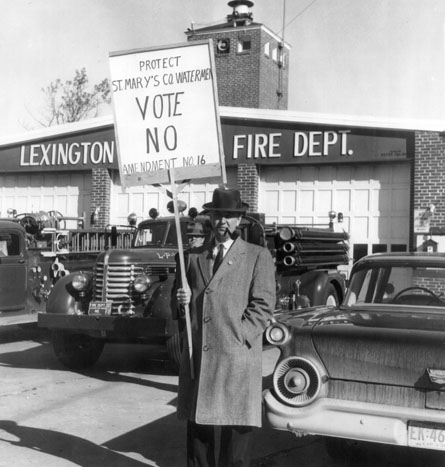
J. Frank Raley, Jr. picketing against a proposed amendment to the Maryland Constitution.

